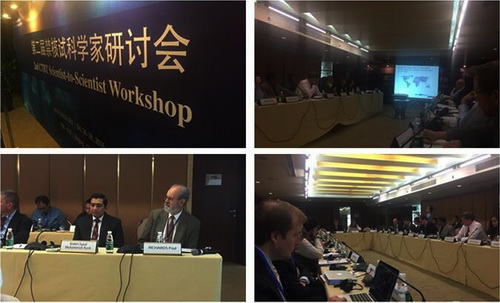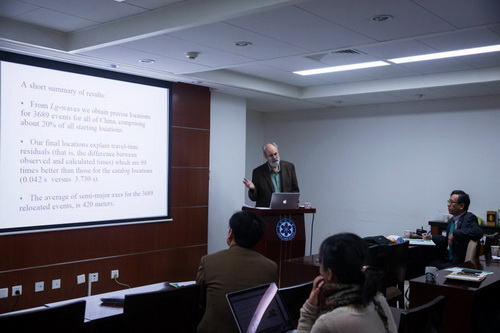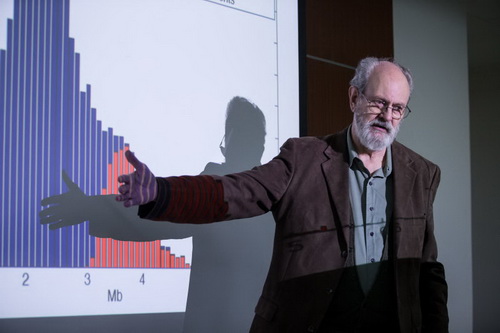From October 26 to 28, 2016, Chinese Ministry of Foreign Affairs held the 2nd CTBT Scientist-to-Scientist Workshop in Beijing. 33 scientists from different countries, including China, the US, the UK, Norway, India and Pakistan, as well as the Comprehensive Nuclear Test Ban Treaty Organization (CTBTO), gathered in Beijing to investigate and discuss the relevant technological problems in emergent nuclear incidents monitoring and response. Zhao Lianfeng, an associate professor at the Key Laboratory of Earth and Planetary Physics, Institute of Geology and Geophysics, Chinese Academy of Sciences, was invited to the workshop, and gave a talk entitled 'Discrimination, Relocation, Magnitude Calculation and Yield Estimation of the North Korean Nuclear Tests'.
Upon invitation of Zhao Lianfeng, one of the leaders of this workshop, Prof. Paul G. Richards, an internationally renowned seismologist at Lamont-Doherty Earth Observatory, Columbia University, visited our institute for academic exchange. Prof. Richards presented an academic report entitled 'Evaluation of a Seismic Event, 12 May 2010, in North Korea', and led a heated discussion with our teachers and students. Moreover, he pointed out that it is necessary to have greater effects on a large amount of fundamental work in seismological research, such as accurate extraction of the arrival time and amplitude of seismic phase in small earthquakes, drafting of seismic annual or monthly report, and promotion and popularization. The visit was accompanied by Prof. Ji Rongsong, from the US Department of State, who also gave a talk entitled 'Overview of the East Asian Regional NDC Workshop (EARNW) Related Common Exercises', in which he introduced the research advancement in the monitoring North Korea's underground nuclear testing by different organizations throughout the world.
Following the workshop, the attendees concluded that the seismological research from quantitative to accurate detection still requires much progress, and involved many challenges. After the face-to-face academic exchange with Prof. Paul G. Richards, the students gained a deeper understanding of many seismologic problems, such as how the precise earthquake location can contribute to understanding the evolution of the Earth's deep structure.

Photos of the 2nd CTBT Scientist-to-Scientist Workshop

Prof. Paul G. Richards visits IGG

Prof. Paul G. Richards gives an academic report